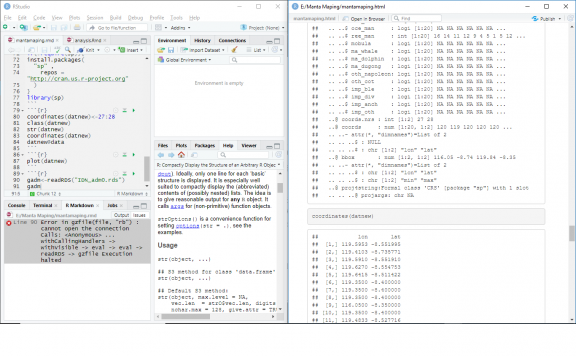It’s the end of our second week of MIP-2019 and we’ve been through a lot of exciting activities. But it’s not over yet! We still have to learn more about how to analyse the data that we collected from manta survey. We are using R to analyse and visualise data. Yesterday we received an introduction to R, and today its time to get advanced!
For refreshing your memory, R is a free software environment for statistical computing and graphics that runs on Windows, MacOS and other operating systems. R is a repeatable program – this means that you can share your analysis with colleagues, collaborators or even reviewers as “reproducible research”. It also means you can review and rerun your analysis when you need to. R is a data visualisation tool – it helps you to present you data in visually appealing and accessible ways via charts, maps and many more.
At first we were trying to use R, but it was really hard to understand how R actually works. Rather the pointing and clicking, becoming an expert with R means learning how to write code, and this is very new for all of us.
Working through the MantaWatch handbook we managed to display our data as a basic graphic. With more practice we will soon be able to show the average manta encounter rates at each site.

Our exercise today is to map our manta safari data. First we set our working directory, and then add the data so R can convert it to plot. The plots produced by R look very clear and professional, like the picture below. We can see the information about number of boats, mantas, and the dive site. It’s cool, right ?

Today was a new experience. We’ve learned new skills that I’m sure will be very useful in the future. And we never get tired of learning, because learning is fun!


